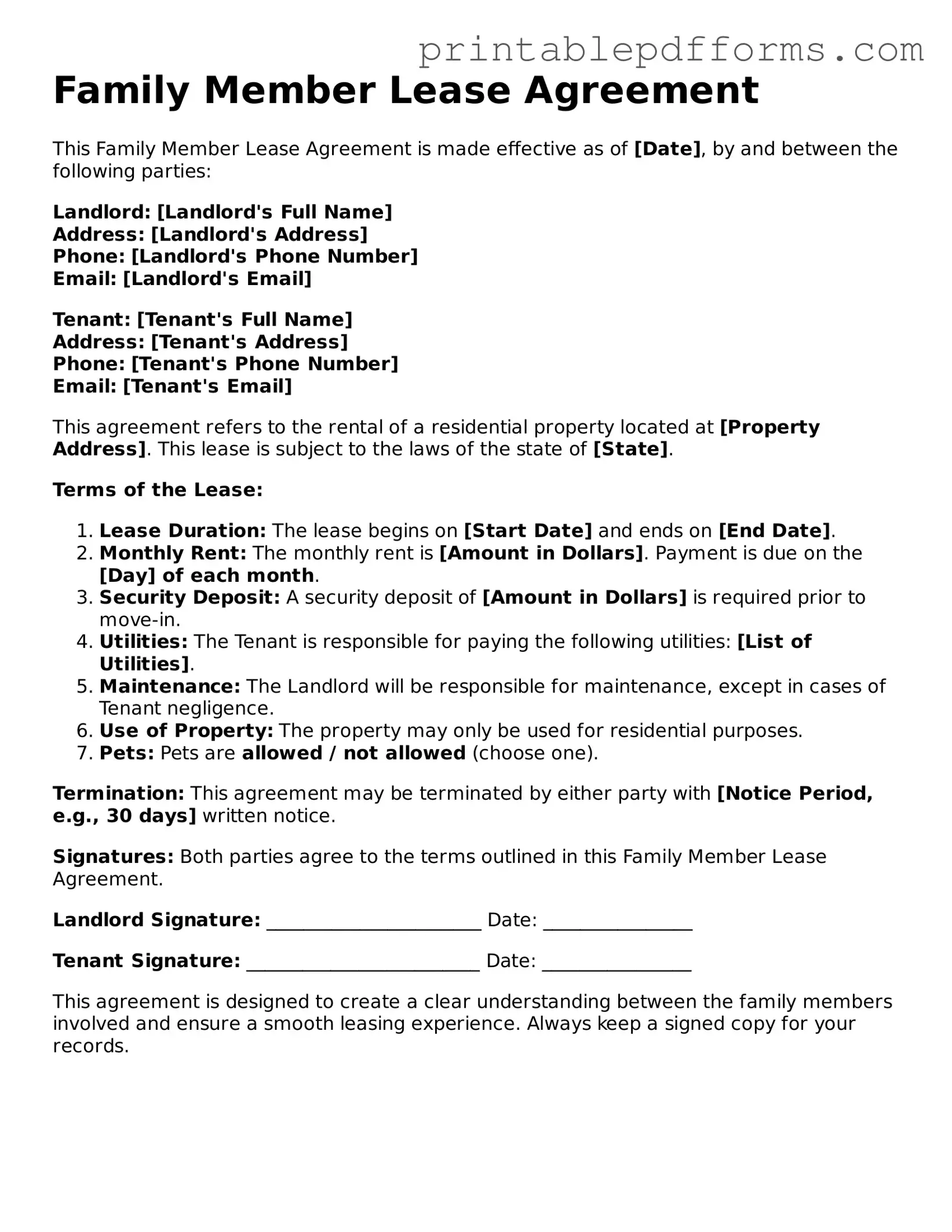Family Member Lease Agreement
This Family Member Lease Agreement is made effective as of [Date], by and between the following parties:
Landlord: [Landlord's Full Name]
Address: [Landlord's Address]
Phone: [Landlord's Phone Number]
Email: [Landlord's Email]
Tenant: [Tenant's Full Name]
Address: [Tenant's Address]
Phone: [Tenant's Phone Number]
Email: [Tenant's Email]
This agreement refers to the rental of a residential property located at [Property Address]. This lease is subject to the laws of the state of [State].
Terms of the Lease:
- Lease Duration: The lease begins on [Start Date] and ends on [End Date].
- Monthly Rent: The monthly rent is [Amount in Dollars]. Payment is due on the [Day] of each month.
- Security Deposit: A security deposit of [Amount in Dollars] is required prior to move-in.
- Utilities: The Tenant is responsible for paying the following utilities: [List of Utilities].
- Maintenance: The Landlord will be responsible for maintenance, except in cases of Tenant negligence.
- Use of Property: The property may only be used for residential purposes.
- Pets: Pets are allowed / not allowed (choose one).
Termination: This agreement may be terminated by either party with [Notice Period, e.g., 30 days] written notice.
Signatures: Both parties agree to the terms outlined in this Family Member Lease Agreement.
Landlord Signature: _______________________ Date: ________________
Tenant Signature: _________________________ Date: ________________
This agreement is designed to create a clear understanding between the family members involved and ensure a smooth leasing experience. Always keep a signed copy for your records.
